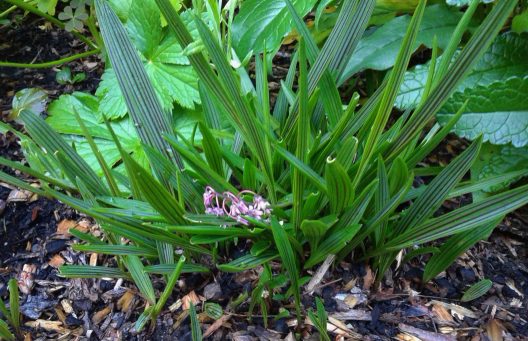I am trying to plant some bulbs but they are being disturbed and eaten by the squirrels. Do you have any tips and tricks to protect my bulbs from being snacked on?
Here is a 2009 article by Sally Ferguson in the online archive of BC Living magazine on preventing squirrel snacking:
Excerpt:
Q. How do I keep squirrels from digging up bulbs?
A. Squirrels can be terrible pests! They won’t bother daffodils and other narcissi bulbs (which taste terrible to them!), but they find tulips and crocus in particular to be worth the effort to sniff out and dig up.
The only sure-fire way to protect tulips and crocuses and other tasty bulb treats from squirrels is to lay wire mesh such as chicken wire on top of the bed. The squirrels can’t dig through the mesh and the flowers will grow neatly through the holes.
Bulbs are most vulnerable in fall immediately after planting when the soil is still soft and worked up. Digging then is easy! Squirrels often “chance” upon bulbs when burying their nuts in soft ground. Or they are attracted by “planting debris” such as bits of papery bulb tunics and other bulb-scented bits from the bulb bags. Don’t advertise your plantings: clean up and keep those squirrels guessing!
Here’s one neat trick that garden writer Judy Glattstein has found to work: after planting new areas, lay old window screens in frames on the ground, covering the newly-worked up soil. The screen weighs enough to
foil the squirrel, but allows for air circulation and rainfall. Once the ground has settled, remove the screens and store for future use.
Another remedy that some find successful is to feed the squirrels during the fall and winter. The theory is that the local squirrel population, when offered a handy plate of peanuts or other easy-to-get treats will leave your bulbs alone. At the White House, the gardeners put up six peanut-filled feeding boxes to satiate the furry denizens there — and reduced squirrel damage on bulb beds by 95 percent!
Many gardeners claim success with commercial repellents, but these are often sticky and unpleasant to deal with, or wash away in the rain.
Home remedies include sowing cayenne pepper into the soil or on the bulbs before planting and scattering moth ball flakes on the ground. You will find advocates and detractors of both methods. A favorite Dutch remedy is
to interplant Fritillaria imperialis. This tall dramatic plant gives off an odor that squirrels (and deer too, reportedly) find repellent. There is a book on the subject, Outwitting Squirrels, by Bill Adler, Jr. (1988 Chicago Review Press, Chicago, IL). It’s aimed at owners of bird feeders, but you may find some helpful hints.
 I keep forgetting the name of a plant I added to the garden some time ago, and every year I have to dig through my pile of old plant tags to remind myself. Any mnemonic devices to help me hold Ledebouria cooperi in my head? Any tips on keeping it growing well? How can I propagate it?
I keep forgetting the name of a plant I added to the garden some time ago, and every year I have to dig through my pile of old plant tags to remind myself. Any mnemonic devices to help me hold Ledebouria cooperi in my head? Any tips on keeping it growing well? How can I propagate it?